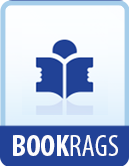The wind veered round from north-east to north-west, and he did not strike the land again until May 1487. When he did so his crew insisted upon his returning, as they declined to go any further south. He therefore turned to the west, and then made the startling discovery that in the course of the tempest he had been blown round the Cape, and that the land he had made was to the eastward of it; and he therefore rounded it on his way home. He arrived back in Lisbon in December 1488, when Columbus met his brother again, and was present at the reception of Diaz by the King of Portugal. They had a great deal to tell each other, these two brothers; in the two years and a half that had gone since they had parted a great deal had happened to them; and they both knew a good deal more about the great question in which they, were interested than they had known when last they talked.
It is to this period that I attribute the inception, if not the execution, of the forgery of the Toscanelli correspondence, if, as I believe, it was a forgery. Christopher’s unpleasant experiences before learned committees and commissions had convinced him that unless he were armed with some authoritative and documentary support for his theories they had little chance of acceptance by the learned. The, Idea was right; he knew that; but before he could convince the academic mind, he felt that it must have the imprimatur of a mind whose learning could not be impugned. Therefore it is not an unfair guess—and it can be nothing more than a guess—that Christopher and Bartholomew at this point laid their heads together, and decided that the next time Christopher had to appear before a commission he would, so to speak, have something “up his sleeve.” It was a risky thing to do, and must in any case be used only as a very last resource; which would account for the fact that the Toscanelli correspondence was never used at all, and is not mentioned in any document known to men written until long after Columbus’s death.
But these summers and winters of suspense are at last drawing to a close, and we must follow Christopher rapidly through them until the hour of his triumph. He was back in Spain in the spring of 1489, his travelling expenses being defrayed out of the royal purse; and a little later he was once more amid scenes of war at the siege of Baza, and, if report is true, taking a hand himself, not without distinction. It was there that he saw the two friars from the convent of the Holy Sepulchre at Jerusalem, who brought a message from the Grand Soldan of Egypt, threatening the destruction of the Sepulchre if the Spanish sovereigns did not desist from the war against Granada; and it was there that in his simple and pious mind he formed the resolve that if ever his efforts should be crowned with success, and he himself become rich and powerful, he would send a crusade for the rescue of the Holy Sepulchre. And it was there that, on the 22nd




